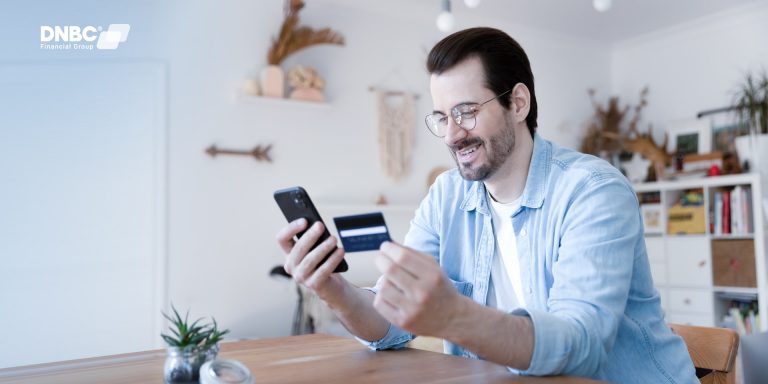Bank routing codes, also known as routing transit numbers (RTNs), are essential pieces of information used in the United States banking system to identify financial institutions and route transactions between them. Every bank has a unique routing code, which is a nine-digit number assigned by the American Bankers Association (ABA). In this article, we’ll provide an in-depth guide to bank routing codes.
However, before we proceed, let us share a quick message with you. If you’re interested in making overseas money transfers with low fees, then DNBC Financial Group’s services might be just what you need. With DNBC Financial Group, sending money internationally feels just as easy as sending money locally.
Everything You Need to Know About Bank Routing Codes
What is a bank routing code?
A bank routing code is a nine-digit number that identifies a financial institution in the United States. It’s also known as a routing transit number (RTN) or an ABA routing number, as it’s assigned by the American Bankers Association (ABA). The routing code is used to identify the bank during electronic transactions, such as direct deposits, wire transfers, and bill payments.
How does a bank routing code work?
When you initiate an electronic transaction, such as a direct deposit or wire transfer, the routing code is used to identify the bank that will receive the funds. The routing code is also used to identify the bank that will send the funds if you’re initiating a wire transfer. The transaction is then processed through the Federal Reserve System, which uses the routing code to route the funds between the banks.
Why are bank routing codes important?
Bank routing codes are important because they ensure that electronic transactions are processed accurately and efficiently. Without routing codes, it would be difficult for financial institutions to identify each other and route transactions between them. This could lead to delays in processing and potentially result in errors or lost transactions.
Bank routing codes are also important for security reasons. They help prevent fraud by ensuring that transactions are only processed between authorized banks. When you provide your bank routing code to a third party, such as an employer or biller, you’re giving them permission to initiate electronic transactions on your behalf. It’s important to ensure that you only provide your routing code to trusted parties and that you monitor your account for any unauthorized activity.
What is bank routing numbers list?
A bank routing number list is a comprehensive list of routing numbers for all the financial institutions in the United States. Routing numbers, also known as routing transit numbers (RTNs), are unique nine-digit numbers assigned to financial institutions by the American Bankers Association (ABA). Routing numbers are used for electronic transactions, such as direct deposits, wire transfers, and bill payments, to identify the receiving bank and route the transaction to the correct account.
While there are many websites that claim to offer a complete bank routing number list, it’s important to note that these lists may not be entirely accurate or up-to-date. Financial institutions may have multiple routing numbers, depending on the location of the branch or the type of transaction, so it’s essential to verify the correct routing number with your bank before initiating any electronic transactions.
It’s also important to be cautious when using third-party websites to obtain routing numbers, as some sites may be fraudulent or contain inaccurate information. When in doubt, it’s best to contact your bank directly to obtain the correct routing number for your specific transaction.
What is a routing number on a card?
A routing number is not typically found on a card, as it’s used to identify a specific financial institution for electronic transactions such as direct deposits and wire transfers. The routing number is a unique nine-digit number assigned to financial institutions by the American Bankers Association (ABA), and it’s used to route electronic transactions to the correct bank and account.
However, some prepaid debit cards may have a routing number associated with them for the purpose of direct deposits. If you’re trying to set up a direct deposit to a prepaid card, you may need to provide the routing number associated with the card to the entity making the deposit. This routing number may be different from the routing number associated with the bank that issued the card, so it’s important to verify the correct routing number with the card issuer before setting up a direct deposit.
How to find your bank routing code
If you need to find your bank routing code, there are several ways to do so. The easiest way is to look at a check from your bank. The routing code is typically located at the bottom left-hand corner of the check, along with your account number and check number. If you don’t have a check, you can contact your bank’s customer service department and ask for the routing code.
It’s important to note that some banks may have multiple routing codes, depending on the location of the branch or the type of transaction. For example, some banks may have separate routing codes for wire transfers and direct deposits. Make sure you use the correct routing code for your specific transaction to ensure that it’s processed correctly.
About DNBC Financial Group
DNBC Financial Group is dedicated to streamlining global financial transactions. Our primary objective is to decrease the expenses associated with international transfers and expenditures, facilitate the receipt of payments from clients abroad, transfer funds among international branches, and mitigate the dangers that come with currency fluctuations. Thanks to this dedication, we’ve been able to broaden our range of services and help individuals and businesses worldwide.
DNBC Financial Group is your trusted provider in international money transfer
- Get 100% free 1-on-1 support
- 100% free account opening
- Seamless onboarding process
Or please contact DNBC
Email: [email protected]
Phone Number:
- +65 6572 8885 (Office)
- +1 604 227 7007 (Hotline Canada)
- +65 8442 3474 (WhatsApp)



 DNBC Team
DNBC Team







